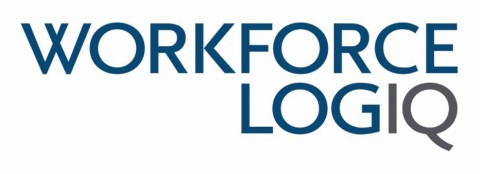U.S. Workforce Volatility Spikes Nearly 70% in Q2 2021, According to Workforce Logiq’s Latest Predictive Benchmark Report
U.S. Workforce Volatility Spikes Nearly 70% in Q2 2021, According to Workforce Logiq’s Latest Predictive Benchmark Report
Public safety jobs increase threefold in volatility as officers seek growth opportunities and positive work environments
ORLANDO, Fla.--(BUSINESS WIRE)--Workforce Logiq, a global provider of AI-powered workforce intelligence, technology, and services, today released its Workforce Management Employee Predictive Volatility Benchmark Flash Report Q2 2021. The analysis reveals a 69% quarterly increase in the number of workers in top volatility categories. This spike, which follows three consecutive quarters of improvement in the Top 35 job categories, is 14% higher than the workforce volatility during the peak of the pandemic, which brought a record-breaking unemployment rate. This predictive benchmark indicates more U.S. professional and knowledge workers will be open to changing jobs and taking unsolicited recruiting calls over the next 60-90 days.
“As pandemic life recedes, U.S. workers are actively rethinking their job and career choices and searching for roles that offer more money, flexibility, advancement opportunities, and more, which is leading to a dramatic increase in employee resignations,” said Jim Burke, Workforce Logiq’s CEO. “Our quarterly and year-over-year predictive volatility benchmarks highlight the impact of this ‘Great Resignation’ period and indicate this trend will continue well into the fall.”
Other key findings from the analysis include:
- Public Safety had the highest Q2 employee volatility increase in the Top 35 job categories, up 300% over Q1, followed by Skilled Trade (+204%) and the Military (+201%). Police reform and racial justice protests have led to a historic number of officer departures, with many pursuing employment opportunities in more welcoming geographies and adjacent sectors. Workforce Logiq’s predictive 5D ProfileSM data shows growth opportunities and positive work environments are the two workplace attributes that public safety officers value the most.
- Every Top 35 job category and U.S. state showed a significant volatility increase in Q2. Finance, the least volatile job category, was up 47%. This is in stark contrast to Q1 2021 where over 70% of job categories showed improvement. U.S. states increased 45% overall in volatility since Q1 and 12% year-over-year.
- States with lower vaccination rates exhibited higher levels of quarterly employee volatility. Mississippi had the highest quarterly volatility increase (+73%) of all states and exited Q2 with the lowest vaccination rate in the U.S. The correlation suggests employees in these states may have higher risk tolerances and are more apt to embrace career changes and new opportunities.
- Wyoming (+70%), Montana (+68%), West Virginia (+67%), and Maryland (+66%) follow Mississippi as the top five states with the highest Q2 volatility percentage increases. New Hampshire had the lowest quarterly increase of +32% of all 50 states, right behind Virginia (+37%), New Jersey (+36%), and Connecticut (+34%).
“Successfully navigating the Great Resignation era will require employers to get out in front of workforce retention issues while quickly winning over high-quality external candidates who are eager to make a move,” said Dr. Christy Petrosso, Workforce Logiq’s Chief Data Scientist and Talent Economist. “Predictive tools surface critical insight on the workers most at risk of quitting and why, where to look for the best new talent, potential future skills gaps, and more. Employers can use this intelligence to proactively address attrition before it impacts the business, upskill the existing workforce, and acquire the right talent to meet immediate and future needs.”
The market analysis is based on proprietary and predictive insight from Workforce Logiq’s Total Talent Intelligence® platform and examines workforce volatility across states, metropolitan statistical areas (MSAs), job functions, and major industry sectors. Workforce Logiq uses proprietary AI models to calculate industry, company, and candidate-specific Talent Retention Risk (TRR) ScoresSM and predict the likelihood of professional and knowledge workers being receptive to unsolicited recruiting messages and job opportunities over the next 60-90 days.
The company tracks, aggregates, and analyzes more than 2,000 events, triggers, and shocks that can impact employment volatility – macroeconomic trends, company-level social media and news sentiment, employee churn indicators, industry news and events, and more – from more than one billion data points, 40,000 sources, and analytics on over 19 million global companies.
Workforce Logiq’s predictive data science and Likely to ENGAGE algorithm were featured in a Harvard Business Review article. Candidates that Workforce Logiq identified as “most likely” to be receptive to new job opportunities were twice as receptive to unsolicited recruitment messages and 63% more likely to change jobs compared to those identified as “unlikely” to be receptive.
To learn more about the current state of the U.S. labor market and employment volatility, download the full report.
To learn more about Workforce Logiq’s predictive insights and how the company equips global organizations to win and retain the talent they need to grow, visit workforcelogiq.com.
About Workforce Logiq
Workforce Logiq, a global provider of AI-powered workforce intelligence, technology, and services to large corporations, enables organizations to win and retain the talent they need to grow. With clients in 50+ countries, Workforce Logiq provides expert guidance, real-time and predictive analytics, and patented and award-winning technologies. Workforce Logiq’s universal sourcing solution addresses all elements of its clients’ acquisition and retention programs, including permanent (RPO), contingent (MSP), and freelance/“gig” (FMS) workers. Backed by global investment firm The Carlyle Group, the company helps clients attain greater management, performance, and financial control over their talent supply chains.
Workforce Logiq was named the #1 global MSP provider for two consecutive years in HRO Today’s Baker’s Dozen Rankings due to its continued commitment to provide its clients with innovative workforce management solutions delivered through its Total Talent Intelligence® platform.
For more information visit http://www.workforcelogiq.com, follow on Twitter @WorkforceLogiq, or connect with Workforce Logiq on LinkedIn.
Contacts
Abigail Holmes
Corporate Ink for Workforce Logiq
Workforcelogiq@corporateink.com
617.969.9192
